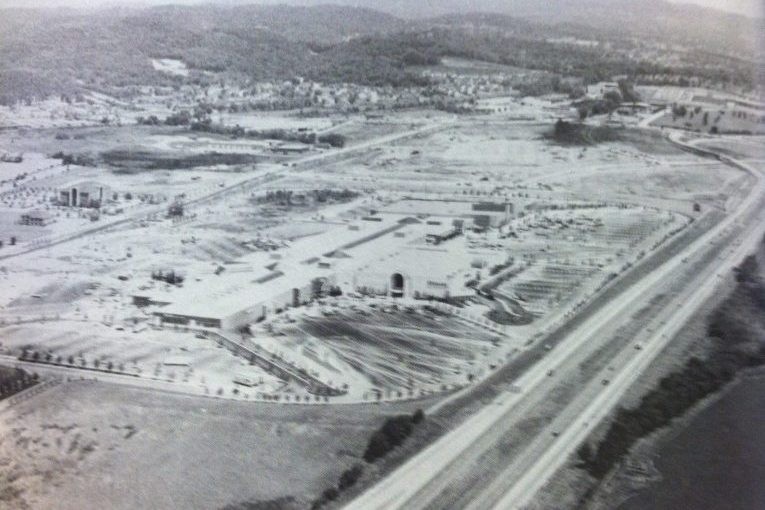1 | 2 | 3 | 4 | 5 | 6 | 7 | 8 | 9 | 10 |
7. Franklin’s Current Shape Came from a Battle with Brentwood
In the 1960s, plans were announced for the building of Interstate 65, cutting straight through Franklin. Long-planned construction on Highway 96 was beginning. As Nashville grew, so would its suburbs. Change and growth were on the way.
What began with the modern expansion of Williamson County in the ’60s continues yet today. The first boom began to take shape as the ’60s ended. A battle for land between Brentwood and Franklin would erupt out of that growth, and create the jagged city limits that exist between the two today.
In March 1969 when Brentwood voted to become an incorporated city, 4,000 people lived there. It would increase 500 percent by 1990, with nearly 20,000 people. Franklin, in 1960 had about 7,000 residents. By 1990 it had 20,000 people. In 1970, there were 54 subdivisions under construction in the county. The extension of Interstate 65, which reached Franklin by 1970, had almost everything to do with it. So did a coming mall, which in the ’70s was just a twinkle in the eye of developers. Land that in 1969 cost $2,000 per acre suddenly cost $10,000 and more, as commercial developers competed to get in on the commerce that the highway would bring.
Thus a previously quiet rural area populated by vast tracts of farms began to become Cool Springs.
Franklin and Brentwood both competed to get in on the tax revenue that would come out of it.

In the early 1980s, all of what is now Cool Springs sat in unincorporated land between Franklin and Brentwood. The process that would create not the CoolSprings Galleria, and in effect Cool Springs itself, started with a simple land grab.
Led by mayor Tom Nelms, Brentwood annexed land south of Moores Lane in the early ’80s.
Franklin’s mayor was six-time incumbent Jeff Bethurum. He had just greenlighted a major bypass called Mack Hatcher Parkway. He called Brentwood’s action a “violation of their promise,” that Brentwood leaders had made to Franklin about where their future limits lay. Helms felt that the no-man’s land of Cool Springs between the cities should remain with the county. This set off an annexation escalation that shaped both the cities and their futures.
Betherum moved to annex 2,200 acres in the no-man’s land between the cities, which Nelms pleaded with the Board of Mayor and Aldermen not to approve. They did, over his hearty exhortations. By 1987, Franklin would add 7,000 acres, nearly doubling the size of the city’s limits. Critics, like Helms, claimed Betherum had a developer in his back-pocket.
The largest single annexation was 4,500 acres east of the interstate.
“Not only did we have to stop Brentwood, we also were receiving a lot of controversy for putting in too many apartments in Franklin,” Betherum said later on to a newspaper interviewer. “My idea was to annex land way out there, and put the apartments on the land, out of sight, out of mind.”
Funny how what seems way out there now ends up right in the middle of things 20, 30 years from now.
One annexed property belonged to a farmer named Marvin Pratt, who owned a 220-acre farm in the Mallory Valley area, just west of Interstate 65. In 1985, Pratt settled on the notion to sell his land, which he bought for $40,000 in 1954 with a $5,000 down payment, to a developer.
He was approached by Southeast Ventures, led by George Volkert, who had helped build two Nashville malls: Hickory Hollow and Rivergate.
“The idea of a Williamson County mall was tantalizing,” wrote Robert Holladay in Franklin: Tennessee’s Handsomest Town. “All the local sales tax would remain in the county; property-tax coffers would be full. Williamson County shoppers would not have to go to Nashville to spend their money.”
Of course, the Galleria Mall would eventually open in August 1991, and truly kick growth into another level that has hardly cooled in the intervening 25 years.
Please join our FREE Newsletter



















